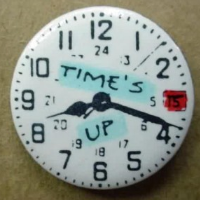Judges Give up on Years of Failed Prison Talks, Will Craft Own Solution to Overcrowding

A panel of three federal judges, frustrated with California’s failed five-year effort to sufficiently reduce prison overcrowding, said they will draw up their own solution within a month.
The federal courts have jousted with the state over unsafe and unhealthy conditions they say violate prisoners’ constitutional rights. The federal government has been in charge of California prison healthcare since 2005 and overcrowding since 2009. The takeover followed years of prison horror stories, frequent inmate deaths, severe overcrowding, deficient health care, defiant mismanagement and, in the end, lawsuits.
U.S. District Judges Lawrence K. Karlton and Thelton E. Henderson and U.S. 9th Circuit Court Judge Stephen Reinhardt concluded Monday that months of talks between the state and lawyers representing prisoners were going nowhere. The judges want California prisons, which now hold 118,435 inmates, to shed 6,271 of them and get within 137.5% of design capacity for the state’s 34 facilities.
The Brown administration has pursued a realignment policy for nearly two years that has reduced the prison population by 25,000 by directing low-level felons and parole violators to county jails. But that is still short of federal mandates. Brown has resisted calls for releasing prisoners to make the quota, preferring to ship them to out-of-state prisons, increase prison capacity and put in place stopgap measures.
The governor wants prison population caps to be deferred for three years and released a budget last week that assumes the state will get a two-year reprieve. He called for spending $500 million in his 2014-15 budget on more prison facilities. Lawmakers, led by State Senate Pro Tem Darrell Steinberg, have proposed reducing the population by beefing up rehabilitation programs and others that fight recidivism, and revisiting laws that impact criminal sentences.
The Brown administration and prisoner attorneys have until January 23 to submit suggestions to the court on how to abide by the population limits. The judges had set April 18 as the deadline for compliance, and there have been numerous instances over the years where it finally appeared that time had run out.
One year ago, Governor Jerry Brown declared the “prison crisis is over” and the “job’s done” at a press conference, the day after the state handed over its admittedly deficient court-ordered plan for further reducing the prison population by June 2013 and improving inmate health care. He called the courts “nitpicky” and extolled the virtues of California’s “gold plate” prisons.
The state has taken the prison fight to the U.S. Supreme Court twice, losing a 5-4 decision in 2011 in which Justice Anthony Kennedy wrote, “A prison that deprives prisoners of basic sustenance, including adequate medical care, is incompatible with the concept of human dignity and has no place in civilized society.”
The Brown administration probably prefers Justice Antonin Scalia’s characterization of the order by a lower court to reduce prison population as “the most radical injunction issued by a court in our nation’s history.”
–Ken Broder
To Learn More:
No Agreement Expected in Prison Overcrowding Talks, Judges Say (by Sam Stanton and Denny Walsh, Sacramento Bee)
Declaring an Impasse, Judges to Order Solution on Prisons (by Paige St. John and Anthony York, Los Angeles Times)
Governor Proposes More Prison Capacity, Instead of Inmate Releases, to Meet Court Deadline (by Ken Broder, AllGov California)
- Top Stories
- Controversies
- Where is the Money Going?
- California and the Nation
- Appointments and Resignations
- Unusual News
- Latest News
- California Forbids U.S. Immigration Agents from Pretending to be Police
- California Lawmakers Urged to Strip “Self-Dealing” Tax Board of Its Duties
- Big Oil’s Grip on California
- Santa Cruz Police See Homeland Security Betrayal in Use of Gang Roundup as Cover for Immigration Raid
- Oil Companies Face Deadline to Stop Polluting California Groundwater





